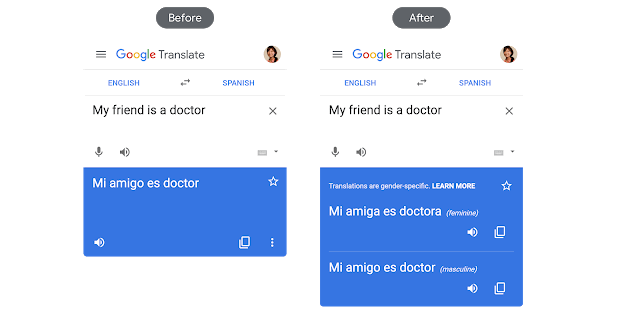Google Translate: A Scalable Approach to Reducing Gender Bias
Melvin Johnson writing for Google AI Blog:
Machine learning (ML) models for language translation can be skewed by societal biases reflected in their training data. One such example, gender bias, often becomes more apparent when translating between a gender-specific language and one that is less-so. For instance, Google Translate historically translated the Turkish equivalent of “He/she is a doctor” into the masculine form, and the Turkish equivalent of “He/she is a nurse” into the feminine form. In line with Google’s AI Principles, which emphasizes the importance to avoid creating or reinforcing unfair biases, in December 2018 we announced gender-specific translations. This feature in Google Translate provides options for both feminine and masculine translations when translating queries that are gender-neutral in the source language. For this work, we developed a three-step approach, which involved detecting gender-neutral queries, generating gender-specific translations and checking for accuracy.

Read more on Google AI Blog.


